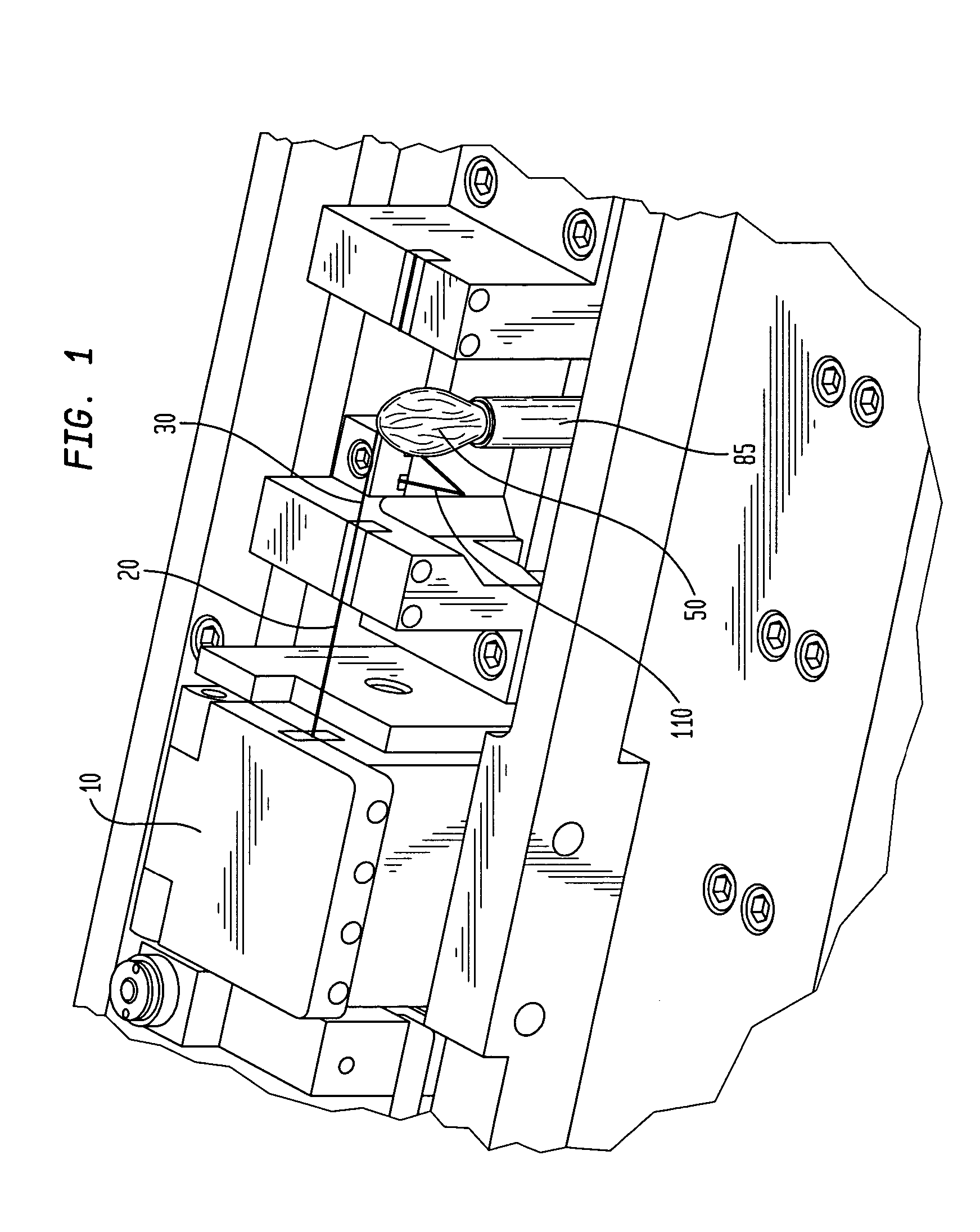Method and apparatus for forming low optical loss splices
a technology of optical fiber and splicing method, which is applied in the direction of glass making apparatus, manufacturing tools, instruments, etc., can solve the problems of inacceptable splicing loss, achieve the effect of avoiding the inconvenience of handling and mixing gases, maintaining a precise tension of the fiber, and reducing the temperature profil
- Summary
- Abstract
- Description
- Claims
- Application Information
AI Technical Summary
Benefits of technology
Problems solved by technology
Method used
Image
Examples
Embodiment Construction
[0018] According to one embodiment of the invention, optical fibers of differing mode-field diameters are connected in a splice of low optical loss as follows. First, the optical fiber having the smaller mode-field diameter is stripped and cleaved according to well-known methods. The next step is to expose the cleaved end to a heat source for about 1 minute to about 40 minutes, more preferably, from about 10 minutes to about 30 minutes. Preferably, the heat source provides a temperature profile of from about 500.degree. C. to about 2000.degree. C. at the region where the optical fiber end is positioned, more preferably, of from about 1000.degree. C. to about 1500.degree. C., still more preferably, of from about 1100.degree. C. to about 1200.degree. C., and optimally about 1150.degree. C.
[0019] The heat source can be any heat source, for example, an electric furnace or a flame produced by burning an organic solid or liquid, such as an alcohol. In one embodiment of the invention, the ...
PUM
| Property | Measurement | Unit |
|---|---|---|
| Length | aaaaa | aaaaa |
| Length | aaaaa | aaaaa |
| Angle | aaaaa | aaaaa |
Abstract
Description
Claims
Application Information
 Login to View More
Login to View More - R&D
- Intellectual Property
- Life Sciences
- Materials
- Tech Scout
- Unparalleled Data Quality
- Higher Quality Content
- 60% Fewer Hallucinations
Browse by: Latest US Patents, China's latest patents, Technical Efficacy Thesaurus, Application Domain, Technology Topic, Popular Technical Reports.
© 2025 PatSnap. All rights reserved.Legal|Privacy policy|Modern Slavery Act Transparency Statement|Sitemap|About US| Contact US: help@patsnap.com



